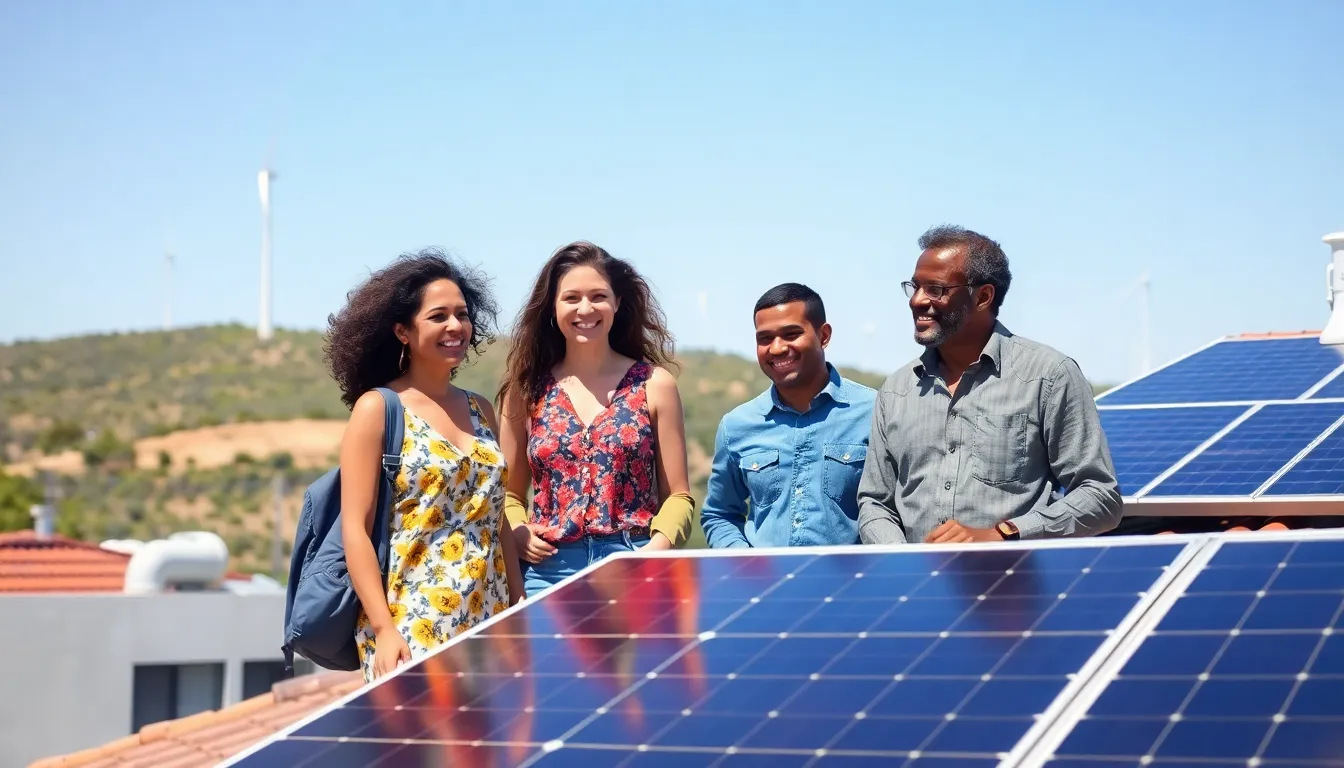Climate change is like that uninvited guest who shows up at your party and starts rearranging your furniture. While some folks scramble to kick it out through climate mitigation, others are busy making the best of the situation with adaptation. But what’s the real difference?
In this battle of strategies, mitigation aims to tackle the root causes, cutting down on greenhouse gas emissions like a ninja with a carbon sword. On the flip side, adaptation is all about rolling with the punches—think of it as putting on a raincoat when the forecast looks grim. As the planet warms, understanding these two approaches becomes crucial. So let’s dive into the world of climate action and find out how to navigate this tricky terrain with a smile and maybe a few laughs along the way.
Table of Contents
ToggleUnderstanding Climate Mitigation and Adaptation
Climate mitigation and adaptation are two critical strategies for effectively addressing climate change. Both approaches play a vital role in protecting ecosystems, communities, and economies from the impacts of global warming.
Definition of Climate Mitigation
Climate mitigation refers to efforts aimed at reducing or preventing the emission of greenhouse gases. Strategies include transitioning to renewable energy sources, enhancing energy efficiency, and implementing carbon capture technologies. For instance, the deployment of solar panels and wind turbines significantly decreases fossil fuel reliance. Moreover, reforestation and improved land use practices help absorb carbon dioxide from the atmosphere. These actions target the root causes of climate change, working to keep global temperatures from rising dangerously high.
Definition of Climate Adaptation
Climate adaptation involves adjusting practices, processes, and structures to minimize the damage caused by climate change effects. Techniques include building flood defenses, enhancing water management systems, and developing drought-resistant crop varieties. For example, coastal communities invest in sea walls to combat rising sea levels. Furthermore, farmers may adopt crop rotations to maintain soil health in changing climates. Such measures enable societies to cope more effectively with the challenges posed by climate change, ensuring resilience in various sectors.
Importance of Climate Mitigation

Climate mitigation plays a vital role in addressing the pressing challenges of climate change. By focusing on reducing greenhouse gas emissions and promoting renewable energy, societies can significantly lessen the long-term impacts of global warming.
Reducing Greenhouse Gas Emissions
Reducing greenhouse gas emissions serves as the cornerstone of climate mitigation efforts. Emission control strategies include adopting energy-efficient technologies and enhancing industrial practices. Transportation emissions decline when people choose public transit or electric vehicles over fossil fuel-powered options. Agriculture practices also contribute, particularly through the reduction of methane emissions from livestock. Actions like these lead to a measurable decrease in atmospheric carbon levels, supporting healthier ecosystems. Substantial reductions can improve air quality and promote public health, creating a sustainable future.
Promoting Renewable Energy
Promoting renewable energy emerges as a significant step toward climate mitigation. Transitioning from fossil fuels to solar, wind, and hydroelectric power reduces dependency on carbon-intensive resources. Vast potential exists in solar energy; rooftop panels harness sunlight efficiently, providing clean power for homes. Wind farms capitalize on natural wind currents to generate electricity, further diversifying the energy mix. Utilizing these renewable sources lowers emissions, enhances energy security, and often leads to economic benefits through job creation in the green energy sector. Effective policies and incentives encourage investment in renewable projects, driving progress toward sustainability.
Importance of Climate Adaptation
Climate adaptation plays a crucial role in addressing the challenges posed by climate change. The effectiveness of strategies hinges on enhancing community and ecosystem resilience to climate impacts.
Enhancing Resilience to Climate Impacts
Building resilience against climate effects is vital for communities. Adjusting agricultural practices can help farmers manage altered rainfall patterns. Communities that invest in flood defenses significantly reduce vulnerability to extreme weather events. Strengthening ecosystems, like restoring wetlands, also provides natural barriers against rising sea levels. Additionally, implementing early warning systems for severe weather alerts enables timely evacuations and preparedness. By fostering resilience, societies can minimize economic losses and sustain livelihoods despite disruptive climate events.
Infrastructure and Community Planning
Effective infrastructure and community planning enhance adaptability to climate change. Incorporating climate data into urban planning ensures developments withstand extreme conditions. Strategies include elevating buildings in flood-prone areas and utilizing green roofs to manage stormwater. Sustainable transportation options, such as bike lanes and public transit systems, reduce emissions while improving mobility. Collaborations among local governments, businesses, and residents facilitate innovative solutions tailored to specific community needs. Prioritizing climate-resilient designs ensures that investments contribute to long-term sustainability and security for future generations.
Key Differences Between Mitigation and Adaptation
Climate mitigation focuses on addressing the root causes of climate change by reducing greenhouse gas emissions. Techniques such as transitioning to renewable energy sources and enhancing energy efficiency are essential. For example, installing solar panels or expanding wind turbine use contributes significantly to lowering emissions.
On the other hand, climate adaptation involves adjusting societal practices and structures to minimize damage from climate impacts. Constructing flood defenses and improving water management systems exemplify adaptation measures. Building sea walls in coastal areas offers critical protection against rising sea levels.
Mitigation strategies prioritize long-term solutions to decrease overall greenhouse gas emissions. This includes promoting energy-efficient technologies and fostering public transit use to reduce transportation emissions. Adopting sustainable agricultural practices, such as managing methane emissions from livestock, also plays a crucial role in these efforts.
Adaptation strategies enhance community resilience and strengthen ecosystems to withstand climate change effects. For instance, adjusting agricultural practices helps manage shifting rainfall patterns and developing drought-resistant crops increases food security. Investing in infrastructure improvements, like elevating buildings in flood-prone regions, can mitigate future risks.
Both approaches are vital for addressing climate change. While mitigation targets emission reductions, adaptation prepares societies for the impacts of climate change, ensuring better outcomes for ecosystems, communities, and economies. Collaboration among local governments, businesses, and citizens is important in developing innovative responses to both mitigation and adaptation challenges.
Understanding the distinction between climate mitigation and adaptation is essential for effective climate action. Mitigation tackles the root causes by reducing emissions while adaptation focuses on adjusting to the inevitable changes already underway. Both strategies play a critical role in building a sustainable future.
As global temperatures continue to rise, the need for innovative solutions becomes increasingly urgent. Communities must embrace a dual approach that combines proactive emission reductions with resilient infrastructure. By fostering collaboration among governments, businesses, and individuals, societies can navigate the challenges posed by climate change. This holistic strategy not only protects ecosystems and economies but also ensures a more secure environment for generations to come.


